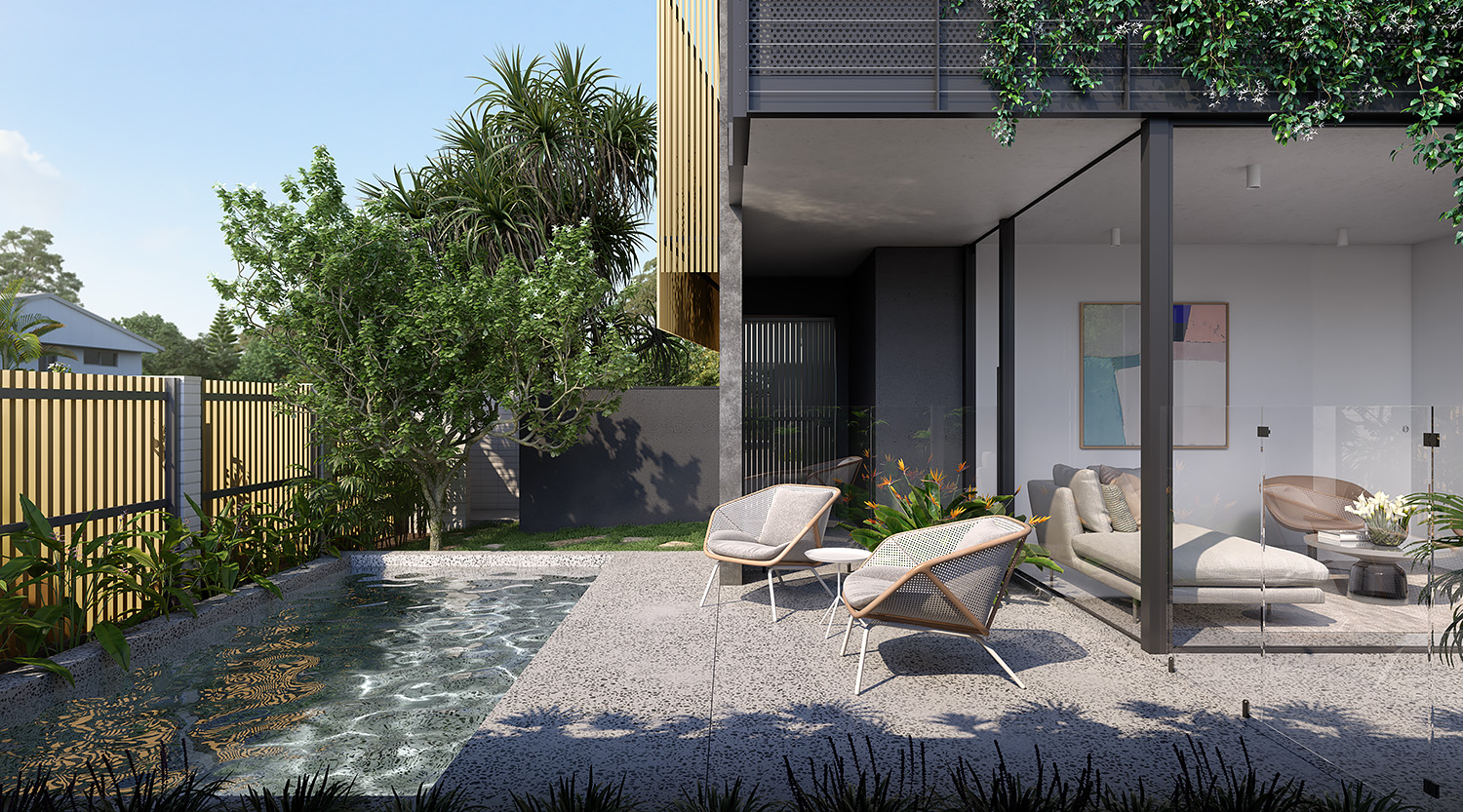Introduction
Architectural 3D rendering has become an essential tool for designers and architects to present their projects in a visually compelling way. One crucial aspect of creating a realistic architectural rendering is skillfully incorporating landscaping into the scene. A well-executed landscaping design can greatly enhance the overall aesthetics and create a sense of harmony in the composition.
In this guide, architectural visualization studio Cleanpix Graphics shares some techniques and tips to help artists of all skill levels master the art of realistic landscaping in architectural 3D rendering.

Realistic Landscaping Details
Landscaping plays a vital role in creating a realistic and immersive architectural rendering. It adds depth, context, and interest to the scene, making it more relatable and visually appealing.
Before starting the landscaping process, it is crucial to conduct thorough research to gather inspiration and references. Study real-life landscapes, botanical gardens and architectural projects with exceptional landscaping. This research will help you understand various elements such as plants, textures, lighting and the overall composition of a well-designed landscape.
One of the most important aspects of realistic landscaping is getting the scale and proportions right. Plants, trees and other landscape elements should be accurately sized and placed to match the surrounding architecture and environment. Pay attention to the scale of objects in relation to each other and the overall scene to ensure a realistic representation.
Adding intricate details to your landscaping can significantly elevate the overall quality of the 3D rendering. Pay attention to elements such as ground cover, flower beds, hedges, rocks and other small objects. Incorporate imperfections like fallen leaves, withered flowers, or moss-covered stones to create a more realistic and lived-in feel. Be sure to add some subtle variation of scaling, orientation and position to similar-sized shrubs and trees to achieve a more organic appearance.
Avoid using repetitive or generic plant models in your landscaping design, strive for variety and diversity in plant selection. Choose a combination of trees, shrubs, flowers, and grasses that complement each other and the architectural style. Consider the climate and location to ensure the chosen plants are suitable for the environment depicted in the rendering. Often, when working with a landscape plan supplied by an architect, the plant species will be specified and it is important to try to match the design as closely as possible.
Pay attention to textures and materials when creating realistic landscaping. Use high-resolution textures for different elements such as grass, leaves, bark, and stones. Adjust the material properties to mimic real-world characteristics, such as light reflection and absorption. This attention to detail will enhance the realism of the architectural 3D rendering.
General 3D Rendering Tips
The composition and camera angle greatly impact the effectiveness of an exterior architectural 3D visualization. Carefully choose the camera position to highlight the key features of the design, allowing the landscaping features to come through and soften the surrounding architecture. Consider the rule of thirds, leading lines and other composition techniques to guide the viewer’s eye through the scene.
Lighting is a crucial element in any architectural 3D render, as it sets the mood and enhances the realism of the scene. Use realistic lighting techniques such as natural sunlight, artificial light sources, and ambient lighting to create depth and dimension. Pay attention to shadows and their interplay with the surrounding context as they can really help to break up any harsh and monotonous elements like large swathes of boring paving or solid walls.
Using high-resolution, unique textures and carefully mapping them onto the 3D models is also important for the hard landscaping like pavings, fencing and retaining walls. For large, unbroken surfaces, it is vital to avoid too much repetition or ’tiling’ of a texture since this will become a bit of an eye-sore. Be sure to also pay attention to material properties such as reflection, transparency, and roughness to create a realistic representation.
Adding small details to the architectural 3D rendering can greatly enhance its realism and visual appeal. Incorporating additional styling and entourage elements in your landscape model such as outdoor furniture/accessories, parked vehicles and people or animals will create a sense of life and functionality in the scene. It is important however to use restraint with including such elements, especially cars and entourage, in order to avoid them from becoming the focus and overpowering the scene… Sometimes less is more.
Conclusion
Mastering the art of realistic landscaping in architectural 3D rendering is a valuable skill for architects, designers and visualization artists. By understanding the principles of realistic landscaping and 3D architectural visualization, along with implementing the provided tips, you can create stunning and immersive visual representations of architectural designs that captivate clients and viewers.
